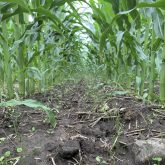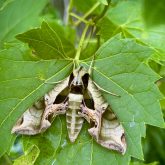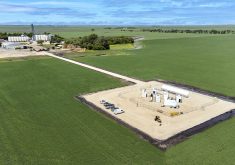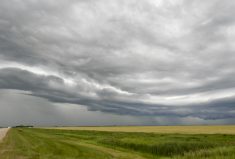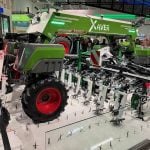Dear Editor,
The fuller truth must be known about the risks and environmental dangers of the Deep Geological Repository (DGR), proposed on prime farmland in the Municipality of South Bruce. The reason is nothing is more imperative than the protection of food security today, and for future generations.
Secondly, the proposed DGR is an experiment, because no DGR based on the Swedish KBS design yet operates anywhere in the world. It is simply dishonest, and arrogant beyond belief, to suggest that it could be safe, given the lack of scientific evidence to justify it.
Read Also

New Iridium technology helps block GPS spoofing
A tiny new chip will allow Iridium’s Positioning, Navigation and Timing (PNT) signals to be received much smaller devices, create a backstop against Global Positioning Systems (GPS) spoofing.
Therefore, I challenge specific statements in the letter from Becky Smith, Nuclear Waste Management Organization (NWMO), in Farmtario’s June 29, 2020 edition. The NWMO assertion that the DGR “aligns with international best practice” refers specifically to the International Atomic Energy Association’s (IAEA) consistent promotion of this DGR “conceptual” design through decades.
But the so-called “international best practice” is not consensual, as Paul Dorfman, founder of the Nuclear Consulting Group pointed out in The Guardian, Aug. 1, 2019: “…given the huge technical uncertainties, if disposal does go ahead and anything goes wrong underground in the next millennia, then future generations risk profound widespread pollution.”
Ms. Smith next refers to the NWMO focus on communities who expressed interest. She writes, “we have progressively narrowed our focus from the initial 22… down to two.” No geological lack of suitability is stated as the reason. Could it be the strong opposition by grassroots people who did their homework, and said, no?
Next, Ms. Smith tries to minimize the footprint of the proposed DGR site, by focusing solely on surface structures, claiming the environment and farmland will be protected. Furthermore, she states: “current land use could continue for decades to come.”
Only decades? The farmers and their neighbours in South Bruce, who have done their homework – independent science research on what the NWMO does not tell them – are outraged, because they now are aware that the copper containers and multiple-barrier system is controversial, and much more still unknown.
The people standing against the proposed DGR also have legitimate concerns about the impacts of radionuclides which, when they are released into the aquifers, will not be limited to their local properties, but instead will spread through watersheds, and into the Great Lakes Basin. Farmers, who ethically practice being stewards of the earth, care about the water, the land, and the children yet unborn.
Living on a two-acre homestead in South Bruce for 13 years until last summer, I attended both public hearings about Ontario Power Generation’s (OPG) proposed DGR for low-and-intermediate level radioactive waste. The OPG sat with its NWMO consultants who gave evidence. I attended every single day, and also was a presenter at both hearings, to communicate my own independent research.
The Joint Review Panel (JRP) repeatedly felt obliged to ask the OPG for better, scientific evidence, which was the reason that a second public hearing was scheduled. Even after the hearings, two things happened. Despite the JRP in its final report saying yes to the OPG DGR, that acceptance came with 100 or more recommendations, many of which referred to mitigations – in other words, after something goes wrong – which have not even been developed nor practiced yet.
The Minister of Environment and Climate Change still delayed agreement for the low-and-intermediate level DGR to proceed until Saugeen Ojibway Nation (SON) received satisfactory responses from OPG to SON’s concerns. Apparently, OPG could not address the concerns. In late January, the two Anishinabe communities of SON voted a resounding no to the OPG DGR.
Attending many community meetings by South Bruce Community Liaison Committee (SBCLC) – which includes a few council members and citizens — I witnessed absolutely no effort to invite independent scientists who are outside of the control of the OPG and NWMO, to communicate the fuller truths about DGRs.
Questions from concerned grassroots people are severely limited, and community guest speakers are only allowed a fraction of the time to present compared with NWMO presenters. The NWMO process is biased. Its attempt to control information, with the municipal council’s complicity, must continue to be challenged, and the proposed DGR stopped.
Sandy Greer, PhD
Blyth, Ontario






